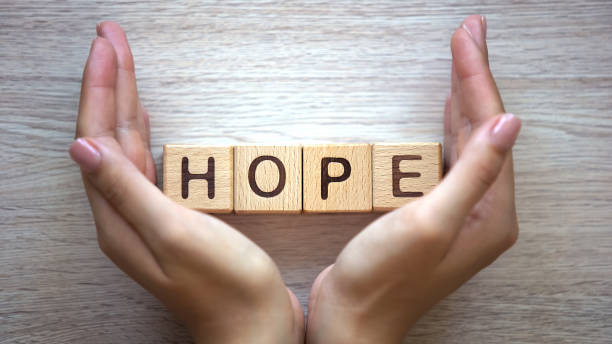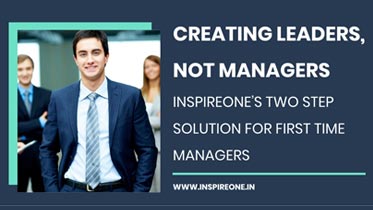
Hope word made by female hands, family creation, the expectancy of baby, happiness
In the last 2 decades, significant research has been conducted on whether optimism and hope can be learned. It however so far, has had limited stakeholders, – the researchers, keynote speakers, trainers (at an awareness level), and the few who have suffered gravely because of lack of optimism and hope.
The Pandemic with all the other ways that it shook the world out of its reverie (collective and individual), has also moved “learned hope and optimism” from an “interesting concept” to a non-negotiable life mindset.
So, what is learning hopefulness about? Why it is needed is amply clear now, especially after we have dealt or failed to deal with the pandemic as a nation.
First, let us be clear on what it is not. It is not the same as the ubiquitous and overstated “positive mindset”. Positive mindset messages have told us that some things will always be beyond our control. Therefore, let’s lump it and smile. It is what it is. And it is almost impossible for most of us to put up the positive façade, knowing that things will not change.
Hope, however, is the ability “to regulate our perception towards the belief in control of the future”. Very specifically, it refers to a belief that you can control something in the future.
And belief is the most powerful driver of mindsets, behaviors, and outlooks.
Research has established that hope is the only positive emotion that requires negativity or uncertainty to be activated. For instance, the current times of the pandemic, and similar other black swan events that events have a strong, often negative impact on the emotional and mental well-being of humans.
In this sense, belief can enable individuals to take what’s coming towards them and find ways to move towards adversity and transform it to a possible extent. Not just feel positive but be hopeful that you can do something about it.
The key to hope is to regulate our perceptions of an event. If we do not believe that we have control over the future, what happens is a negative downwards spiral.
With covid now impacting and almost disrupting mankind for more than a year, there an undeniable and urgent need for hope and optimism. If we cannot set it in action and optimize it now, we never will be able to do it, as individuals, communities, and nations.
Benefits of hope:
At the very base, hope helps us to stay functional in the face of adversity and at its highest it can help us in achieving our goals, vision, dreams in the face of uncertainty. Since negative events disturb our inner equilibrium, building hope helps us to be functional, active, willing to move ahead and achieve certain objectives and goals.
Hope is also the potential of an individual to achieve his best, his higher self. This belief, especially in leaders, can be beneficial in a situation like covid. This enables leaders to not just handle a situation from the egoistic or materialistic standpoint but from a more humane standpoint. A larger purpose that has more power than any other tangible goals
Steps in Building Hope
- Recognizing our power: Regardless of perceiving a crisis as an opportunity or danger, it creates a friction or dissonance in the mind. Hope has been researched to provide the perspective and lens of empowerment and resolve the dissonance. The belief that things can be changed to whatever extent possible can remove doubt and hesitation of actions.
- Recalibrating goals: crisis often leads to goals being thwarted and the resultant frustration and despair. Self-compassion at times like this can be mobilizing. Self-compassion means being gentle, kind and understanding with yourself; knowing that it is ok not to have answers or capabilities to deal with every kind of crisis; and that there is a scope to learn and find means to deal. Therefore, in times of crisis instead of despairing about failure and lost goals, we can recalibrate our goals. Thereby retaining the motivation and zest to achieve goals, albeit different ones.
- Recognizing the good that exists: Once we learn to build hope, it needs to be sustained.
- It is imperative that we start to recognize the positives that we hitherto dismissed as hygiene or basic.
- Efforts of people are to be recognized even if they do not create commensurate results. The quantum of effort comes from a positive intent. Positive intent is a rare occurrence.
- Empathy for people who may not have the same grit or vision you have had. They could have reasons, or you could have lucked out having it as a natural preference.
- Not judging people with one lens.
- Engaging positively; identifying opportunities to display kindness or compassion. Even in times when success is not the narrative
- Learned Hopefulness vs. Learned helplessness: For evolutionary reasons, a chronic negative stimulus shuts us down; we save our energy for moments when we might have influence over the future. This leads to what theorists call learned helplessness. This inaction can lead people to overlook opportunities for relief or change. To overcome this mindset, Dr. Dan Tomasulo suggests practicing ‘learned hopefulness’; actively looking for positive deviants in an otherwise beyond our control situation. Saying “we cannot do that, yet” vis saying, “we cannot do that.” opens vistas of possibilities.
- Building Resilience by learning through exemplars: A common trend with organizations or individuals is to focus on problems. However, in organizations, and with individuals there always well-functioning pockets, some efforts that effecting some results. An essential tool is therefore to focus on the positive deviants. InspireOne’s solution around the H.E.R.O (Hope, Energy, Resilience, Optimism) concept, talks about energy from positive deviants and how powerful it is to help organizations bounce forward.
- Building a Culture of Hope: To build a culture is a slow and arduous process. The top leadership and the influencers within an organization must believe that a culture of hope is needed and is possible. The leaders must then drive it. They can be coached on the skills, behaviors, and actions needed, but they must be visibly led and modeled by them.
In the long term, it also means hiring people who are hope-oriented and developing people for the hope and resilience mindset. Another key aspect toward building a hope culture is to develop harmonious passion – which leads to higher engagement, focus, and joy… As the culture transforms, employees start thinking about the future begin to see it as opportunities, even if crisis and dilemmas loom large in front of us.
In conclusion, it is important to note that hope is bi-directional. It may begin with a positive emotion from inside of us that motivates us toward achieving our goals, once we achieve those goals, it further gives us positive feedback which then assists us to persevere and remain motivated to achieve our future goals.







